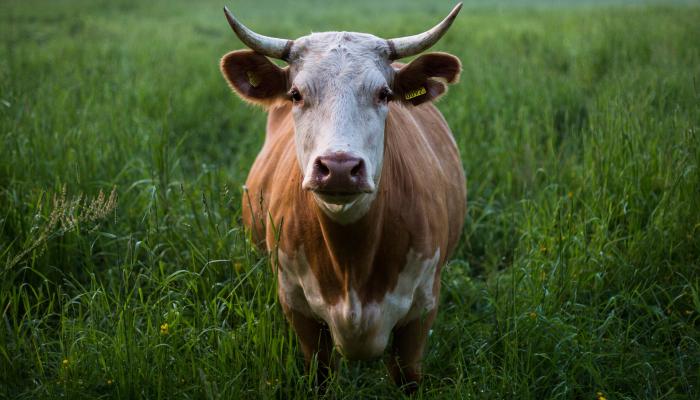
What is the environmental impact of 1 kilogram of cultivated meat in a commercial production scenario? That question is central to the new study by CE Delft, commissioned by GAIA and The Good Food Institute (GFI). When cultivated meat is produced with renewable energy, the environmental impact is reduced by about 93% compared to beef, by 53% compared to pork and by 29% compared to poultry. “The results are clear,” says Hermes Sanctorum, cultivated meat consultant for GAIA. “If you want to do good for the environment, then you should eat as much plant-based food as possible. If you still want to eat meat, it is best to eat cultivated meat made with green energy: good for the animals and good for the environment. ”
For GAIA, cultivated meat is primarily a solution for animal suffering. In Belgium alone, almost 900,000 animals are slaughtered every day, often from intensive farms where the animals have to live in appalling conditions. “But industrial farming also has a major impact on the environment,” Sanctorum explains. “That is why we commissioned a study to make a comparison between cultivated meat and slaughter meat. This study, in collaboration with The Good Food Institute, is a worldwide first: it is the first time that a study on cultivated meat has been done in collaboration with cultivated companies and with detailed data from these companies.”
We will not get there with just a plea for veganism
What are the main results in the study? When cultivated meat producers choose for production via green electricity, cultivated meat scores better than any type of conventional meat. Conventional beef always has the greatest environmental impact, followed by conventional dairy cattle meat. Cultivated meat, based on the expected energy mix in 2030, scores better than beef. Cultivated meat producers then use electricity from coal, gas, wind, solar, etc. according to international forecasts. When cultivated meat producers choose for green energy for their bioreactors, cultivated meat outperforms pork or poultry meat.
This study is yet another proof that the large-scale consumption and production of meat, especially beef, has a very negative impact on the environment. Plant-based products therefore always achieve the best environmental score and GAIA remains in the first place in favor of a plant-based diet. But according to Sanctorum, it is an illusion to think that everyone will eat completely plant-based. “Meat consumption continues to increase worldwide. Even in Europe and Belgium, where people eat less meat, more is still being produced, namely for export. If we really care about animals, meat must be made differently. We will not get there with just a plea for veganism.”
Better than tofu
Although land use is not so decisive for this study, cultivated meat scores particularly well on that point. Cultivated meat on both conventional and renewable energy is almost three times better than poultry meat; for cultivated meat on renewable energy, land use even scores better than tofu according to the study. With less land use, work could be done to restore our ecosystems, for example reforestation. That will be decisive for a better climate. "
Cultivated meat will not be in the supermarket tomorrow. “We are hopeful that it can be produced on a large scale by 2025. Worldwide, more and more sustainable energy will be used in the future, so that cultivated meat offers a solution for animal welfare and the environment."
Roadmap
GFI Senior Scientist Elliot Swartz: “As soon as 2030, we expect to see real progress on costs for cultivated meat and massive reductions in emissions and land use brought about by the transition to this method of meat production. This research signals a vote of confidence and serves as a practical roadmap for the industry to address technical and economic bottlenecks, which will further reduce climate impacts and costs. Government investment in R&D and infrastructure will be critical to accelerating the development of cultivated meat and help us achieve global climate goals. Favorable policies and carbon markets can incentivize the restoration of agricultural land for its carbon sequestration and ecosystem services potential, maximizing the climate benefits of cultivated meat.”
CE Delft Senior Researcher Ingrid Odegard: “This research provides a solid base on which companies can build, improve, and advance in their goal of producing cultivated meat sustainably at scale and at a competitive price point.”
Cultivated meat
Cultivated meat is meat that is grown from animal stem cells outside the body of the animal. This takes place in bioreactors, which is comparable to traditional fermentation of beer and yoghurt.
Although no animal has to be slaughtered for cultivated meat, it is real meat. At the cellular and molecular level you therefore see no difference between cultivated meat and conventional meat.
CE Delft is an independent research and consultancy firm, specialized in developing innovative solutions for environmental issues.